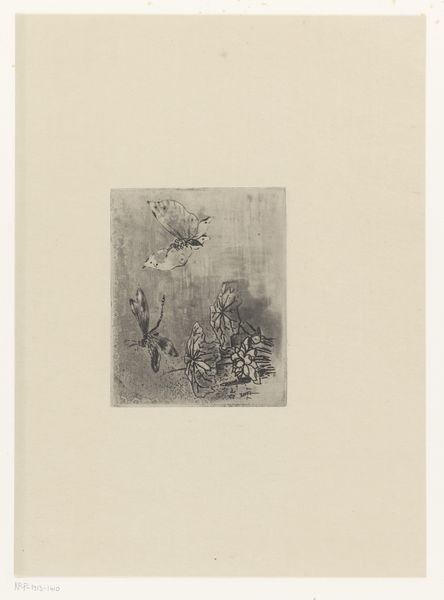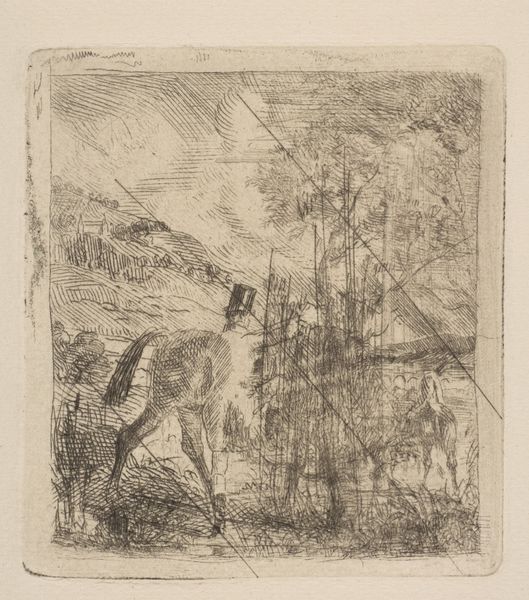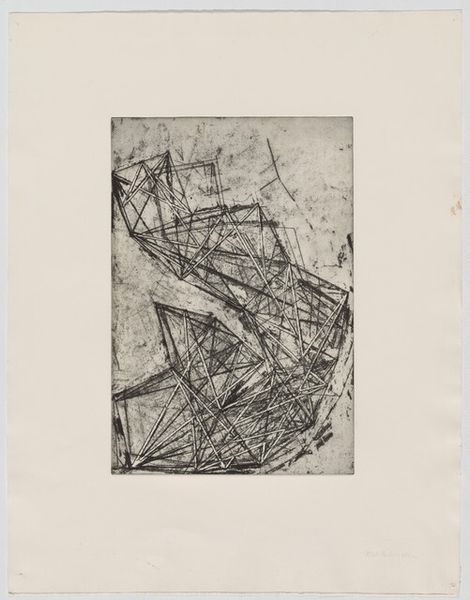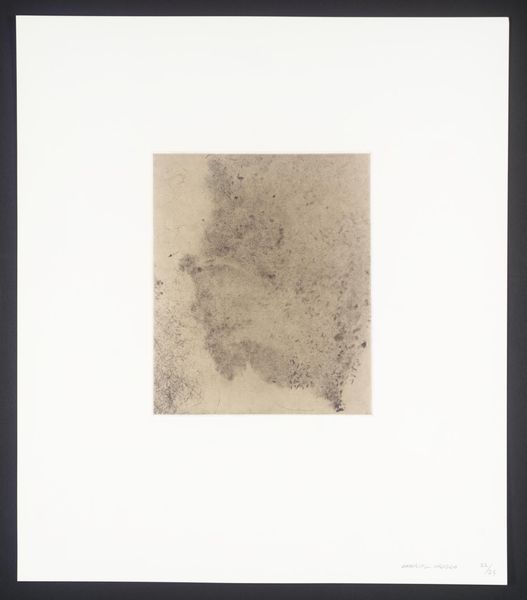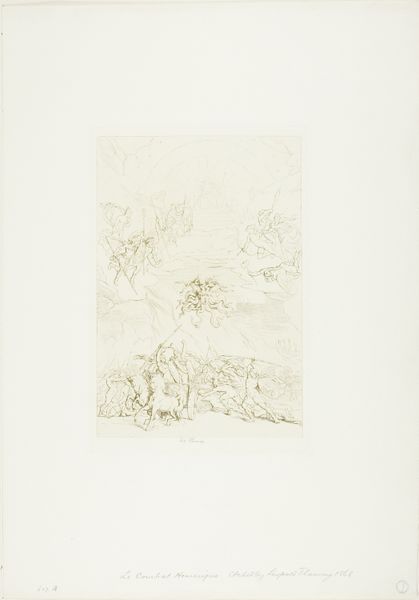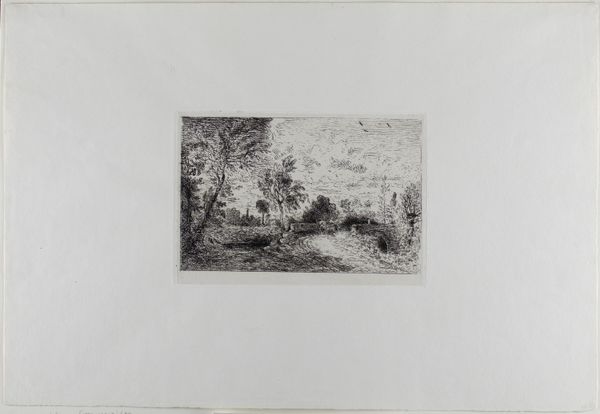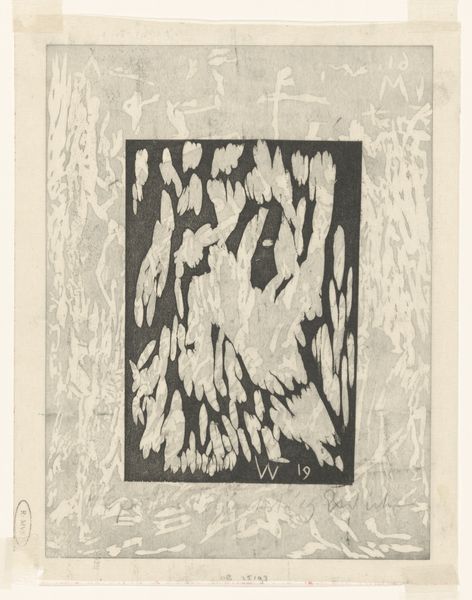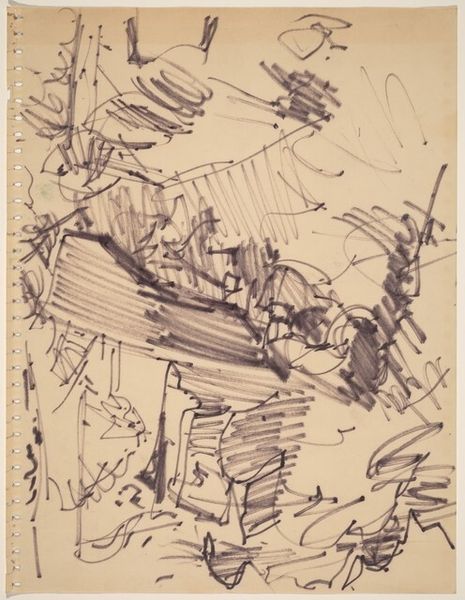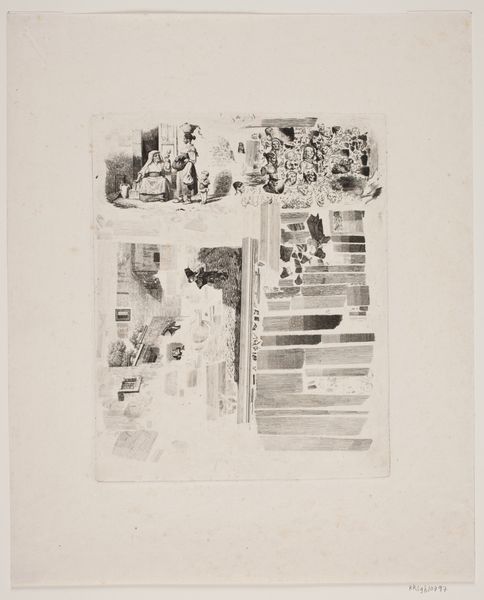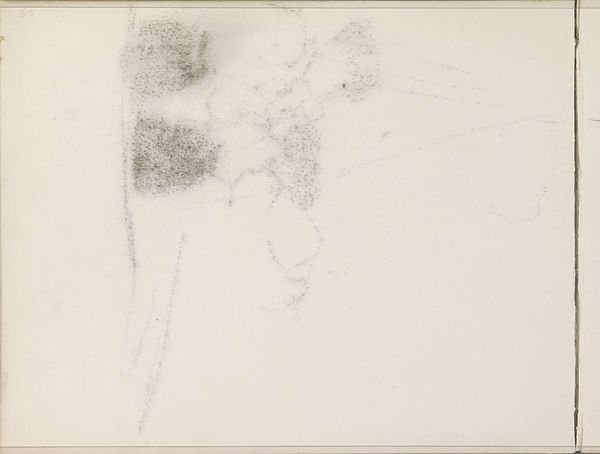
drawing, print, etching
#
pencil drawn
#
drawing
# print
#
etching
#
pencil sketch
#
landscape
#
pencil drawing
Dimensions: 128 mm (height) x 89 mm (width) (billedmaal)
Curator: Looking at this ethereal etching from the 1870s, titled "Illustration til Holger Drachmann, 'Aarstiderne'. Maj," one is immediately struck by its delicate beauty. It's thought to be the work of an anonymous artist, brought to life using drawing and print media. What are your initial impressions? Editor: It feels remarkably dense for a landscape, almost claustrophobic. The use of line is interesting—a whirlwind of activity contained within the picture plane. The contrasting dark and light regions draw you in but provide few visual clues of what the exact dimensions or structure might be, apart from suggestive indications of dense foliage. Curator: Exactly! Consider this was created in a time of immense social upheaval, witnessing industrialization and burgeoning social movements. I feel the artist's choice to depict a lush, perhaps untamed, natural space offers a counter narrative to that world. Think of the Romantic period that was just beginning to blossom in other forms of artwork at the time. Editor: I see your point. Yet, look at how the dense network of lines interacts. The forms appear somewhat indeterminate as the structural organization is suppressed through a certain blending and diffusion of lines in the overall visual experience of looking at the work. We might regard this etching as less a symbol of untamed nature, but, in contrast, an almost artificial construct given these competing visual cues. Curator: Interesting! Another approach could be considering what May signifies—new beginnings, fertility, a return of vibrancy after winter. In the Nordic context particularly, where winter grips for so long, May held, and perhaps continues to hold, immense cultural weight. Perhaps this artist uses the density to convey that explosion of life after the bleakness. Editor: Perhaps the artist worked spontaneously to build forms as a matter of improvisation where the end visual configuration resulted without the use of visual structural cues. The medium may have lent itself to this particular overall organization, if at all intentional as the debate evolves on questions surrounding artistic intention, authority, and the final interpretation that emerges from the viewer. Curator: Ultimately, I think we can agree on the evocative nature of this seemingly simple work. It’s small, understated but asks profound questions about humanity and the world we inhabit. Editor: Agreed. Its formal tensions and complex simplicity provide many interesting and different avenues to analyze it as a work of art.
Comments
No comments
Be the first to comment and join the conversation on the ultimate creative platform.


